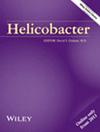Prevalence of Autoimmune Gastritis Worldwide: A Systematic Review and Meta-Analysis
Abstract
Background
Autoimmune gastritis (AIG) is a chronic immune-mediated disease characterized by the presence of anti-parietal cell antibody and progressive corpus-predominant atrophy. The global prevalence of AIG and its associated factors remain poorly understood. This study aimed to systematically estimate the prevalence of AIG worldwide and identify demographic and diagnostic factors influencing its variability.
Methods
In this systematic review and meta-analysis, we searched Medline, Scopus, and Embase from database inception until December 7, 2024. Prevalence was pooled using a random-effects model, and potential sources of heterogeneity were explored by subgroup analysis and meta-regression analysis.
Results
A total of 47 studies involving 15,817 individuals were included. The global prevalence of AIG was estimated at 3.85% (95% CI: 2.94–5.04, I2 = 99.3%). Notable geographical variation was observed, with a prevalence of 4.94% in Europe (95% CI: 3.66–6.63), 2.23% in Asia (95% CI: 1.19–4.14), 2.82% in America (95% CI: 1.48–5.31), 8.46% in Africa (95% CI: 5.58–13.14) and 8.08% in Australia (95% CI: 4.69–12.79). The prevalence was highest when diagnosed by serological antibody (5.4%, 95% CI: 3.79–7.65), followed by histology (2.71%, 95% CI: 1.68–4.36) and combined serology and histology (1.81%, 95% CI: 0.80–4.07). Meta-regression analysis revealed a positive correlation between H. pylori infection and AIG prevalence.
Conclusions
This study estimated the global prevalence of AIG and underscored the significant geographical and methodological variability. Future studies of large-scale are still in urgent need to standardize the diagnostic criteria and further investigate risk factors, thus enhancing the understanding and management of AIG.

 求助内容:
求助内容: 应助结果提醒方式:
应助结果提醒方式:


